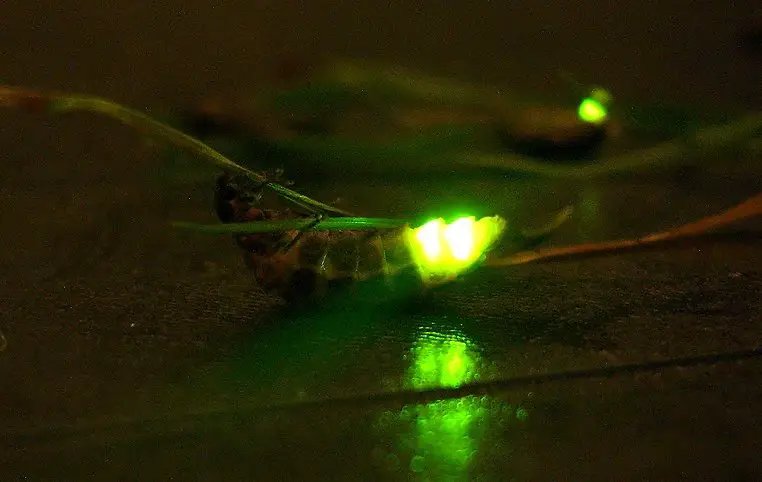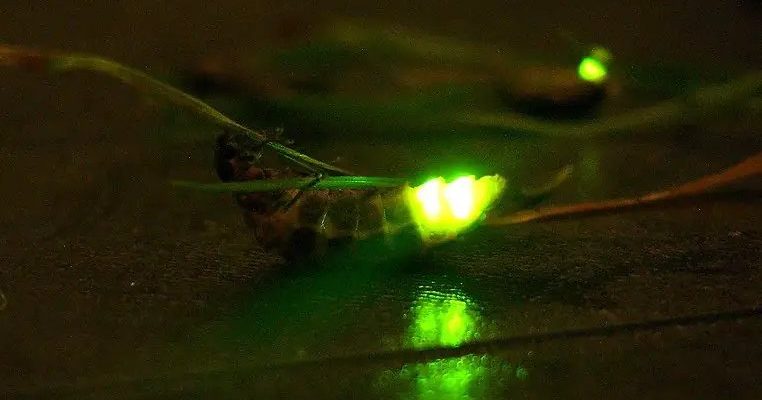
Glow worms, often mistaken for fireflies, are actually larvae of certain beetles or flies. They produce light in a process known as bioluminescence, which isn’t just for show. The glow serves as a lure to attract prey, creating a vibrant tableau of life after sunset. But what about the insects that engage with glow worms? Let’s dive into this intriguing world, where both predator and prey play crucial roles in the nighttime ecosystem.
Understanding Glow Worms
Before we explore the insects that interact with glow worms, let’s clarify what these unique creatures are. Glow worms primarily inhabit dark, moist areas like caves and forests. They use their bioluminescence to attract other insects, which become trapped in their sticky silk threads. Imagine a spider spinning a web, but instead of just catching flies, these glow worms are luring their dinner with a captivating glow.
Glow worms are present in various regions across the globe, from New Zealand’s famed glow worm caves to temperate forests in Europe and North America. Their light can be mesmerizing, brightening the otherwise pitch-black surroundings. This phenomenon isn’t only beautiful—it’s a crucial part of the food chain, helping regulate insect populations.
Nocturnal Insects: A Closer Look
You might be wondering, which insects interact with glow worms? The list is diverse and includes various beetles, moths, and even some types of ants. Each of these insects plays a specific role in the ecosystem, with their relationships to glow worms often being quite fascinating.
1. Moths: The most common insects attracted to glow worms are moths, especially species like the *Noctuidae*. They are naturally drawn to light, and considering the glow worms’ bioluminescence acts like a beacon, moths often find themselves ensnared in the glow worms’ threads. This interaction highlights how nature often draws creatures together in a delicate balance of life and death.
2. Beetles: Various beetles also come into contact with glow worms, especially those that thrive in dark habitats. Some beetles might even be predators of glow worms, turning the tables on the glowing larvae. It’s a strange twist in nature’s tale, where the hunter can sometimes become the hunted.
3. Ants: Interestingly enough, certain ant species are known to visit areas where glow worms reside. While they may not be direct predators, they can scavenge the carcasses of insects caught by the glow worms, helping to keep the ecosystem clean.
The Role of Moths in the Glow Worm’s Life Cycle
Moths have a unique relationship with glow worms. They not only play a role in the glow worm’s food chain but also contribute to its life cycle in other ways. Here’s how:
– Attraction to Light: As mentioned, moths are heavily attracted to light. When they approach a glow worm, they can inadvertently become a meal. This process shows how important the glow worm’s light is—not just for hunting but for sustaining its life.
– Ecological Significance: By drawing in moths, glow worms help maintain the balance of insect populations. Too many moths can lead to overgrazing of plants, while too few can disrupt pollination. This intricate dance keeps nature in check.
– Predation Dynamics: Although moonlight may help moths navigate the night sky, glow worms alter the usual predator-prey dynamic by posing a risk to these winged insects. This interaction exemplifies the complexity of ecosystems, where predation isn’t always straightforward.
Beetles: The Double-Edged Sword
Not all interactions are straightforward. Some beetles may prey on glow worms, turning them into a sought-after snack. Let’s break down this relationship:
– Predatory Behavior: Certain beetle species, particularly some members of the *Carabidae* family, are known to feed on glow worms. This predation is significant because it shows the competitive side of the nocturnal world. Not every insect that flits through the night is looking for a meal; some are actively hunting.
– Competition for Resources: With multiple predators vying for the same prey, glow worms must rely heavily on their unique lighting to attract food while evading predators. This struggle is a vivid reminder of nature’s balancing act, where the stakes are high.
– Nutrient Cycling: When beetles consume glow worms, they contribute to nutrient recycling in the environment. As these beetles break down glow worms, they return nutrients to the soil, affecting plant life and overall ecosystem health.
The Ants and Their Scavenging Role
Ants, often overlooked in nighttime narratives, play a subtle but essential role in their interactions with glow worms. Here’s how:
– Cleaning and Recycling: Ants help maintain the ecosystem by consuming dead insects around glow worm habitats. By scavenging carcasses, they help keep the area clean, preventing the buildup of decaying matter.
– Indications of Ecosystem Health: A healthy ant population can indicate a balanced ecosystem. If ants are thriving, it suggests that glow worms and their prey are also in check, creating a thriving habitat.
– Mutual Benefits: While ants benefit from scavenging, glow worms benefit indirectly. By maintaining a clean environment, ants help reduce disease spread among insects, which can benefit glow worms by stabilizing their food supply.
Why These Interactions Matter
The relationships between nocturnal insects and glow worms are more than simply captivating. They highlight deeper ecological principles that have a profound impact on biodiversity and ecosystem balance. Here’s why these interactions are significant:
– Biodiversity: Each species plays a role in the web of life. The interactions between these insects help maintain a diverse ecosystem, supporting various life forms and keeping populations in check.
– Food Web Dynamics: The predator-prey interactions among glow worms, moths, beetles, and ants illustrate the complexities of food webs. Understanding these relationships can help us appreciate how ecosystems function and why they need protection.
– Conservation Perspectives: As habitats face threats from urbanization and climate change, understanding these interactions can guide conservation efforts. Protecting glow worm habitats means protecting the insect life that thrives alongside them, which is essential for maintaining ecological balance.
The nighttime world, filled with glow worms and their insect companions, is nothing short of magical. From moths attracted to the light to beetles and ants engaging in a dance of predator and scavenger, each interaction teaches us about the web of life and the importance of every creature within it.
So next time you find yourself in a dark forest, take a moment to appreciate the unseen connections among these nocturnal insects. They remind us that nature is a complex tapestry, and every thread—no matter how small—plays a vital role in the overall picture. Embracing this knowledge is one step toward a deeper appreciation of our natural world.

